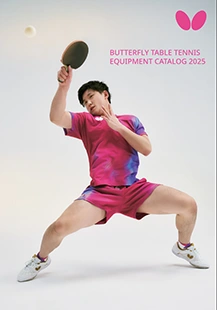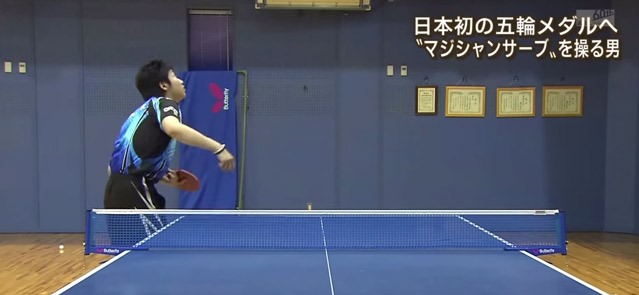Serving Tips
by Han Xiao
Most players understand that a good serve is one of the best ways to give themselves an advantage in points. However, many players don’t have a clear idea of how to improve their serves, and mostly go by trial and error. If a serve doesn’t work in a match, they usually scrap it. This means that the majority of players serve what they’re comfortable with and try to react to what the opponent does with it, while other players continuously change serves without settling on any particular set. Here are some tips to improving your serve.
1. Practice. This seems basic, but many players don’t practice their serves. It’s very difficult to practice new serves against a practice partner because you will miss quite a bit. Practicing on your own is the only way to perfect the basics of a new serve and be comfortable using it even in regular practice sessions.
2. Make sure you’re comfortable serving to all 6 premium locations. The premium locations are short to the backhand, middle, and forehand, as well as very deep to the backhand corner, middle, and forehand corner. When practicing a serve, make sure to practice to all the locations that you might possibly want to serve it to, not just one location.
3. Know that serving too short is not effective. A lot of players can serve short, but it’s very easy for the opponent to make an aggressive return or drop shot if the serve is very close to the net. The most difficult short serves to deal with are short serves with a little bit of pace and where the second bounce on the opponent’s side of the table lands very close to the edge of the table. This can cause hesitation on the opponent’s side as he or she has to determine whether the serve is long or short.
4. Know exactly what spin you are serving. Sometimes, knowing what spin you’re serving is more important than the amount of spin or the deceptiveness of the serve. If you know you are serving obvious nospin, you can prepare for the opponent to flip aggressively and counterattack easily. If the opponent pushes, you likewise can react since it’s much slower than the return you were expecting. On the other hand, if you serve nospin and thought you were serving heavy underspin, you are unlikely to be ready for a flip and can easily be caught off guard.
5. Think about and practice the follow-up to the serve. Don’t rely on the opponent to miss your serve. A lot of serves are very effective not because of the serve itself but because the threat of a third or fifth ball attack. As mentioned above, an obvious nospin serve is one of these serves if the follow-up is well drilled. Many top players in the world serve a lot of nospin and topspin serves in order to take advantage of the strong attacks that are possible as a result, as long as they are ready for the possible returns of serve the opponent can employ.
6. Have different types of serves and have a plan B ready. This is especially important if you rely heavily on heavy sidespin in one direction. Some opponents will have a lot of trouble with these types of serves, while other opponents will adjust very easily. For example, a reverse pendulum serve served by a right hander will likely frustrate other right handers much more than lefties. It’s important to be able to at least serve straight serves if you can’t comfortably serve sidespin in both directions in a match. One solution for players who cannot serve a reverse pendulum serve is to practice a backhand serve for emergency situations.
7. Find the right balance of variety. Of course, only having 2 or 3 serves is not a good idea as we’ve mentioned the need for a backup plan. However, having too many serves and changing too often throughout the course of a match is also generally ineffective. Follow-ups and transitions need to be well drilled and specializing in 5 or 6 serves allows you to be ready for most of the possible outcomes when using these serves. Using a lot more than that usually results in misses as well as not being ready for some of the opponent’s serve returns.
8. Learn to make different serves look similar. For example, in this video, Jun Mizutani shows among other things how two of his serves start out very similarly but are completely different.
The most important thing is definitely to practice and not to give up. Just because a serve doesn’t work at first does not mean that it is completely bad. Often it takes at least a year to fully integrate a new serve into your game, and many more years to perfect. Keep at it, continue to observe how your opponents return your most familiar serves, and refine both the serve and the follow-up attack. This way, your serves and service game should improve over time.
























